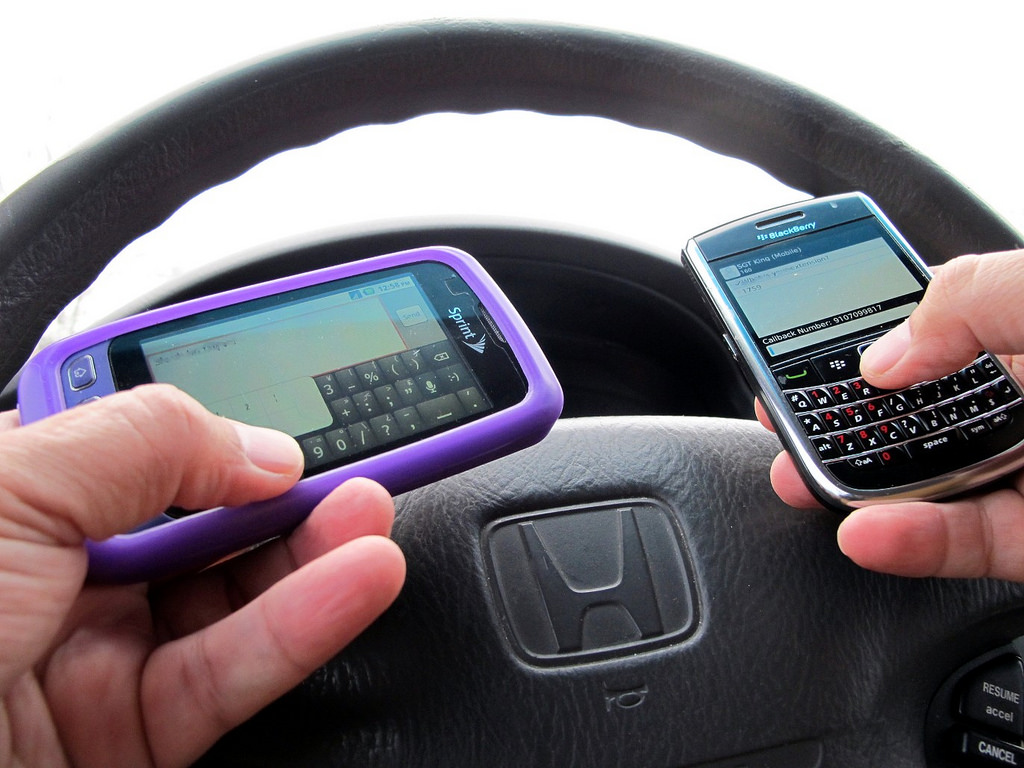Every day millions of drivers double their risk of crashing without thinking twice about it. That’s the conclusion of new Virginia Tech research that claims to engage in any of the myriads of modern distractions while behind the wheel is a really bad idea. While obvious sins like texting get the majority of attention from insurance companies and legislative bodies, there are plenty of other ways to allow yourself to become distracted while flying down the highway.
Laws of Physics
What many teenagers and 20-somethings don’t take the time to consider is that the two or three ton hunk of metal they’re piloting cannot come to a stop on a dime and will roll over (and over and over and over) when asked to complete a change in direction that flies in the face of the realities of mass and momentum. Even under the best of conditions that include absolute focus by the driver, bad things can happen. Throw in any of a half dozen distractions that should be performed anywhere except in a moving vehicle and you’ve got a recipe for disaster.
The Distractions
In Australia, 1 in 4 drivers admits to multi-tasking while driving. As a quick review, multitasking is anything you do in a car that detracts from the 100 percent focus that needs to be on the task at hand – namely, staying alive and out of a crash. What do your neighbors like to do rather than focus on the deadly vehicle under their control?
- 75% like to eat
- 55% use their mobile phone
- 18% of women put on their makeup
- 9.4% of men brush their teeth
- 8.5% change clothes
- 6.5% read and/or watch movies
As you can plainly see, it’s not all about texting, although that particular action takes the brunt of public derision. The Virginia Tech study goes on to study visual evidence of the moments before 900 severe crashes that showed drivers allowing themselves to be distracted at a ridiculously high rate. And young drivers, those with the least amount of driving experience but the highest propensity to engage in smartphone activities, find themselves particularly at risk for wrecks, injuries, and death.
The Solutions
What’s the best way to stop distracted driving when every fiber of our human nature encourages us to grab that drive-through burger or send that quick text? Inciting noticeable change in this area is likely to be a long process that combines education and perhaps more severe penalties for infractions. This might seem like a tedious path to start down but think of the progress made in the area of seatbelt use. In 1983 only 14 percent of drivers wore one, while the latest numbers put that figure at 90 percent. Could the same thing be accomplished with distracted driving? Maybe. Maybe not. Putting on a seatbelt is a set-it-and-forget-it decision you make once at the beginning of a trip. Battling distractions while driving is a temptation that never ends.
Technology Strikes Back
Here’s something you might not have considered but could cost you big time. 17 percent of drivers confess to taking selfies while underway in a motor vehicle. If you think Big Brother is not watching, you’re wrong. Insurance companies make it a point to track down their clients on social media and spot check to see if they are posting images of obviously distracted driving. Indulge in this behavior and expect to see your rates rise precipitously or have your policy canceled entirely.
Final Thoughts
There are no quick and easy solutions to ridding society of the dangers of distracted driving. For now, the best bet is to educate policymakers, law enforcement, vehicle designers, and the driving public about the reality that the act of driving distracted isn’t that much different than playing a nice round of Russian Roulette. Hopefully, the self-preservation instinct will kick in at some point. If not, there’s always self-driving cars to look forward to.
Feature image credit: https://www.flickr.com/photos/armydre2008/

